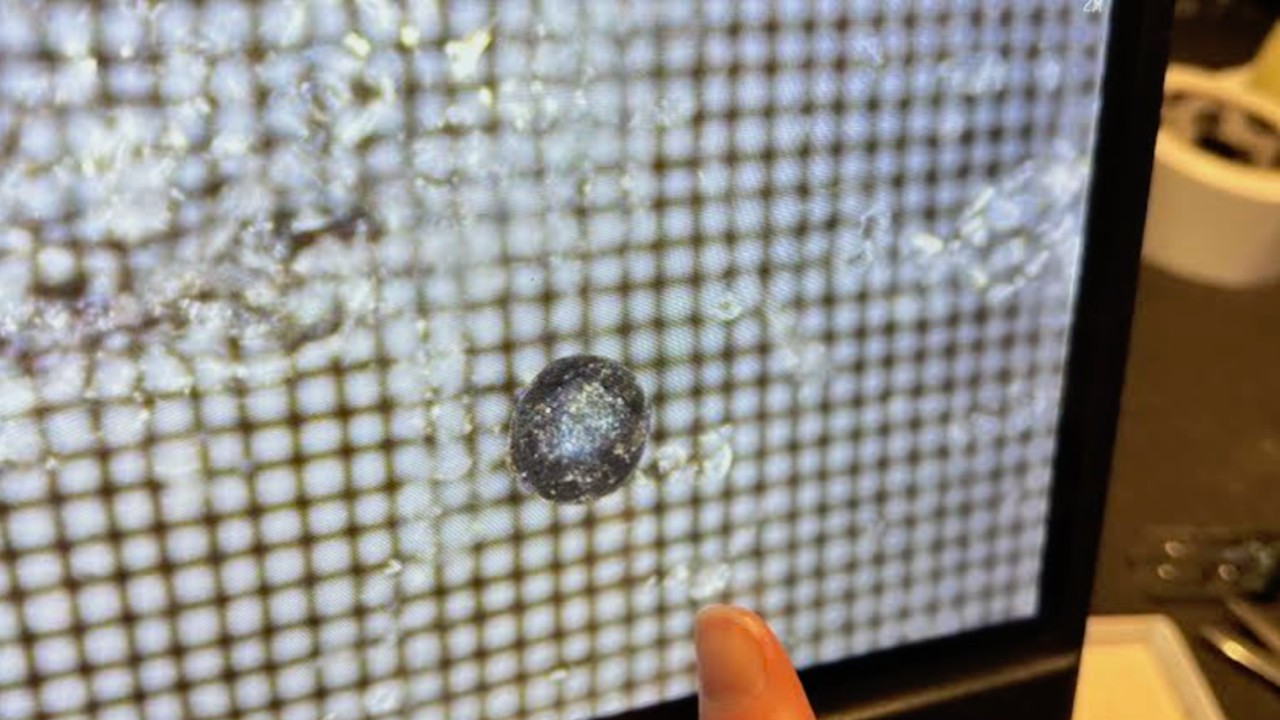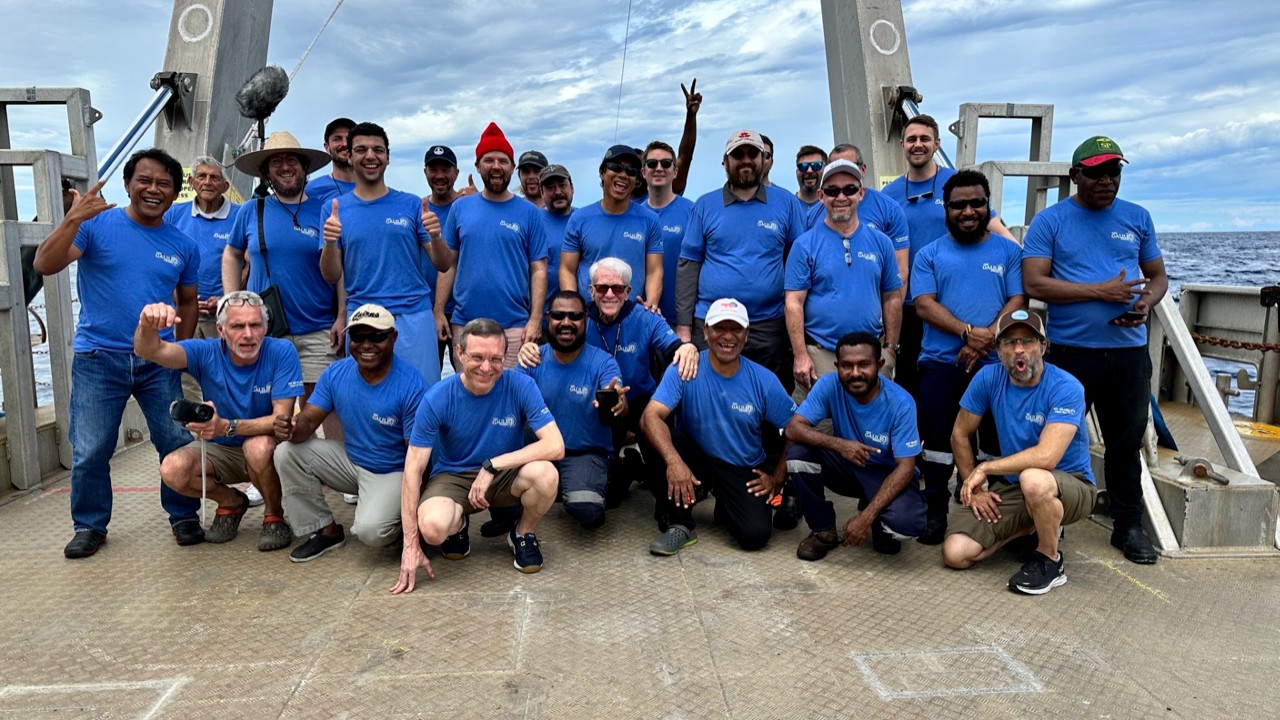
A new study casts more doubt on the supposed success of an interstellar fishing expedition.
On Jan. 8, 2014, a space rock about 1.6 feet (0.5 meters) wide exploded over the western Pacific Ocean. In 2019, Harvard astronomer Avi Loeb and his colleague Amir Siraj determined that the intruder came from outside our solar system, a conclusion backed three years later by U.S. Space Command.
That would make the object, called CNEOS 2014-01-08, our first known interstellar visitor; its arrival predated by three years that of the puzzling 'Oumuamua, which zoomed past Earth in 2017.
Related: Interstellar meteor fragments found? Harvard astronomer's claim sparks debate, criticism
Loeb and his team soon decided to hunt for pieces of the interstellar meteor. In June 2023, they dragged a magnetic sled across the seafloor in the presumed drop zone near Papua New Guinea, hunting for metallic pieces of CNEOS 2014-01-08, or, as the researchers call it, IM1.
Last July, Loeb announced that this effort was a success: The expedition had collected hundreds of millimeter-scale spherules, whose discovery, he wrote, "opens a new frontier in astronomy, where what lay outside the solar system is studied through a microscope rather than a telescope."
Many other scientists weren't convinced, however. For example, Matthew Genge, a planetary scientist at Imperial College London, said that Loeb's team took an unwarranted leap in tying their spherules to the January 2014 fireball.
"Meteorite ablation debris has been found, but not from an instrumentally observed fireball," Genge told Space.com via email last July. "There never has been a micrometeorite derived from a specific fireball event, and never will be, since it is an impossibility."
Now, a new study adds another layer of doubt. Loeb's team chose their search area in part based on data gathered by a seismic station on Papua New Guinea's Manus Island, which picked up vibrations that seemed to be generated by the meteor's fiery, superfast trip through Earth's atmosphere. But those vibrations likely have a much more prosaic cause, according to the new research.
"The signal changed directions over time, exactly matching a road that runs past the seismometer," study leader Benjamin Fernando, a planetary seismologist at Johns Hopkins University in Maryland, said in a statement.
"It's really difficult to take a signal and confirm it is not from something," Fernando added. "But what we can do is show that there are lots of signals like this, and show they have all the characteristics we'd expect from a truck and none of the characteristics we'd expect from a meteor."

Fernando and his team didn't see a fireball signal in the Manus Island data. But they did spot one in measurements made by stations in Australia and the Pacific island nation of Paulu that were built to pick up vibrations caused by nuclear testing.
And that signal was centered more than 100 miles (160 kilometers) from where Loeb's team performed their meteorite hunt, according to the researchers.
"The fireball location was actually very far away from where the oceanographic expedition went to retrieve these meteor fragments," Fernando said. "Not only did they use the wrong signal, they were looking in the wrong place."
The expedition likely found fragments of ordinary meteorites, or particles generated when meteorites hit Earth's surface and mixed with terrestrial contamination, according to Fernando's team, which will present the new results next Tuesday (March 12) at the Lunar and Planetary Science Conference in Houston.
Related: Could the solar system be teeming with interstellar objects? We'll soon find out (op-ed)
Loeb, however, is sticking to his guns. In a blog post released on Medium today (March 8), the astronomer stressed that the Manus Island data were secondary in the setting of the expedition's search zone. Rather, he and his team relied chiefly on information gathered by U.S. Department of Defense (DoD) sensors.
"We found that data from other seismometers farther away does not provide meaningful constraints, whereas the new preprint uses the large uncertainties from these other seismometers to claim that the fireball could have been anywhere across a large region if we were to ignore the DoD localization data," Loeb wrote. ("The new preprint" is the Fernando et al. paper, which has not yet been peer-reviewed.)
"But why should we selectively ignore data which accompanied the discovery of this meteor?" Loeb added. "The astronomers who dismiss the DoD data and argue that it must be entirely wrong should lose sleep at night, because their mistrust implies that their safety is not secured and their taxes are wasted on an unreliable national security infrastructure."
He also cited the odd composition of the recovered spherules, which his team found to be significantly enriched in beryllium (Be), lanthanum (La) and uranium (U) compared to native solar system material.
"Our research team's analysis of 60 elements from the periodic table shows that these spherules are not coal ash and did not originate from the crust of the Earth, the moon or Mars," Loeb wrote in the new blog post. "The 'BeLaU'-type abundance pattern is unprecedented in the scientific literature and could have originated from differentiation in a magma ocean on an exoplanet with an iron core."
He also said that his team is planning another expedition to the drop zone, to search for larger pieces of the meteor that could shed more light on its provenance. So stay tuned: We probably have not reached the end of IM1's twisty and controversial tale.







